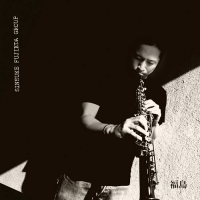Home » Jazz Articles » Multiple Reviews » Victor Feldman: Good Vibes (and Great Piano) from Britain
Victor Feldman: Good Vibes (and Great Piano) from Britain
 Victor Feldman
Victor Feldman
The Arrival of Victor Feldman
Original Jazz Classics
1998 (1958)
Although it might have been even better with fewer tunes and longer solos, count this recording a win-win. Les Koenig's Contemporary label made beautifully "imaged" recordings—not the dimensionless, "flat," in-your-face Van Gelder sound of the East Coast Blue Note label, but with a three-dimensional, spacious, inviting sound that captures a piano or acoustic bass as well as any recordings made in 2009.
Listen to the grit and gristle of each note played by Scott LaFaro (today, practically all acoustic bass players sound the same—lots of volume and little personality or character, whether due to the player's set-up, studio equipment, or the mixing). Feldman's piano is not as developed as his vibes work at this early stage in his career, so there's lots of space (and solo room) for LaFaro's majestic sound and unstoppable drive. In fact, it's probably no exaggeration to say the date is as much LaFaro's as Feldman's. The latter makes a favorable impression; but the former puts on a clinic. Not to be missed by any acoustic bassist or admirer.
Feldman shows why he was considered a prodigy, someone who was quickly welcomed on competitive American soil, where he quickly found employment in the L.A. studios as well as with groups such as those of saxophonist Cannonball Adderley and trumpter Miles Davis. He's supremely melodic, with fresh voicings and a unique take on Red Garland's block-chorded style (it's unfortunate the latter was given few opportunities outside the studios of Blue Note and Prestige). This is a "musician's album," meant to impress the kind of listener who can appreciate a great solo by saxophonist Charlie Parker, trumpeter Dizzy Gillespie or pianist Bud Powell.
 Victor Feldman
Victor Feldman
Merry Olde Soul
Original Jazz Classics
1991 (1961)
It's a shame former Riverside producer Orrin Keepnews apparently did not see fit to include this one among the recently remastered reissues in the long-defunct Riverside series. Feldman was taking on formidable odds when he arrived from Britain approximately five years before this session. First of all, he was a foreigner presuming to hold his own among stiff competition in the land of jazz's birth. Second, he was a "West Coast," white jazz man presuming to be accepted by the school of black-dominated, hard-bop and soulful, "East Coast" players who were rated first not necessarily in the minds of the "greater" public but certainly in the hearts and minds of the most serious fans of the music.
As impressive as is his earlier date, The Arrival of Victor Feldman, Merry Olde Soul is overall a more satisfying session. True, there's no Scott LaFaro on this later recording (which is in no way intended as a slight to Sam Jones), and there's no flag-waver like Gillespie's "Bebop," on which Feldman breaks all speed limits.
But thanks to the addition of Hank Jones, "Merry Olde Soul" exhibits more warmth and variety in its textures. It's also a more "groove-oriented session" thanks to the use of Cannonball Adderley's rhythm team of Jones (whom Felman unselfishly features almost as much as he had LaFaro) and Louis Hayes. Finally, the later session reflects the modal harmonies that had been introduced into jazz a year earlier with Miles Davis' Columbia album Kind of Blue. And, last but not least, Feldman reveals that he had developed as a piano soloist, especially in his employment of widely-spaced blocked chords reminiscent of Red Garland.
It's ironic that a musician who came to the States as a percussionist with Woody Herman would attract the likes of Adderley and Davis largely because of his fresh and rich piano voicings (more complex than those of Red Garland), which distinguished his work as a pianist from both Bobby Timmons and Joe Zawinul, who preceded and succeeded him respectively in Cannonball's group. (Feldman studied informally with pianist Carl Perkins who, at least among pianists working the West Coast during the mid to late 1950's, simply had no peer).
Feldman's work on vibes is far less known than his piano playing, which was exclusively featured on his recordings with Davis and Adderley. He gets a distinctive, incisive, clean sound on the instrument that sets him apart from a player like Milt Jackson (who kept those rotators running slowly) or Eddie Costa (who favored fast-rotators). Feldman pretty much plays the instrument without benefit of electronic effects. And when he plays a straight-ahead blues ("Bloke's Blues," "Mosey"), he's in the same league as Timmons, Zawinul, Garland, Wynton Kelly—or Jackson. Foreigner or not, he speaks the language like a native.
 Victor Feldman
Victor Feldman
On Vibes
VSOP Records
1995 (1957)
The two best pianists on the West Coast were arguably Perkins and Feldman—except that Feldman plays vibes on this date (which is as it should be since, as talented a pianist as he was, no one had a more personal, sparkling and rapturous, unique and immediately identifiable sound than Perkins). Unfortunately (or, perhaps, merely ironically), Feldman's versatility may have worked against him, as it caused the limited jazz public to view him as a "miscellaneous musician," with vibes another rabbit in his bag of tricks.
But listening to him closely is to experience a player who eschews the slow vibrators of Milt Jackson while making melodic sense on his own terms. In fact, he may deserve as much credit as Gary Burton for moving the instrument forward after Jackson had brought it into the age of bebop.
Tracks and Personnel
Arrival Of Victor Feldman
Tracks: Serpent's Tooth; Waltz; Chasing Shadows; Flamingo; S'Posin; BeBop; Greater Love, (There Is No); Too Blue; Minor Lament; Satin Doll.
Personnel: Victor Feldman: piano, vibraphone; Scott LaFaro: bass; Stan Levey: drums.
Merry Olde Soul
Tracks: For Dancers Only; Lisa; Serenity; You Make Me Feel So Young; Come Sunday; Man I Love; Bloke's Blues; I Want to Be Wanted; Mosey on Down.
Personnel: Victor Feldman: vibraphone; Hank Jones: piano; Sam Jones: bass; Andy Simpkins: bass; Louis Hayes: drums.
On Vibes
Tracks: Fidelius; Squeeze Me; Sweet and Lovely; Bass Reflex; Chart of My Heart; Wilbert's Tune; Evening in Paris.
Personnel: Victor Feldman: vibraphone; Frank Rosolino: trombone; Carl Perkins: piano; Leroy Vinnegar: bass; Stan Levey: drums.
Tags
PREVIOUS / NEXT
Support All About Jazz
 All About Jazz has been a pillar of jazz since 1995, championing it as an art form and, more importantly, supporting the musicians who make it. Our enduring commitment has made "AAJ" one of the most culturally important websites of its kind, read by hundreds of thousands of fans, musicians and industry figures every month.
All About Jazz has been a pillar of jazz since 1995, championing it as an art form and, more importantly, supporting the musicians who make it. Our enduring commitment has made "AAJ" one of the most culturally important websites of its kind, read by hundreds of thousands of fans, musicians and industry figures every month.


















